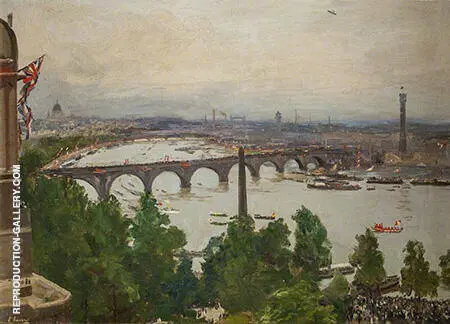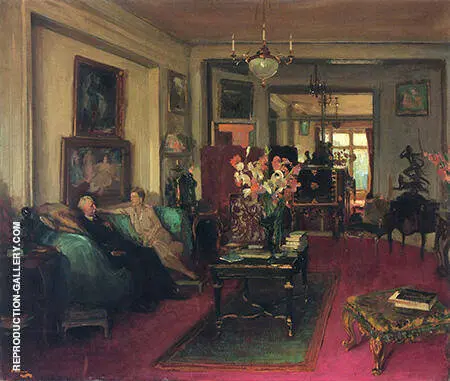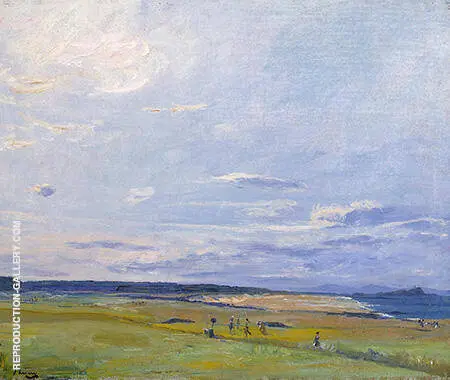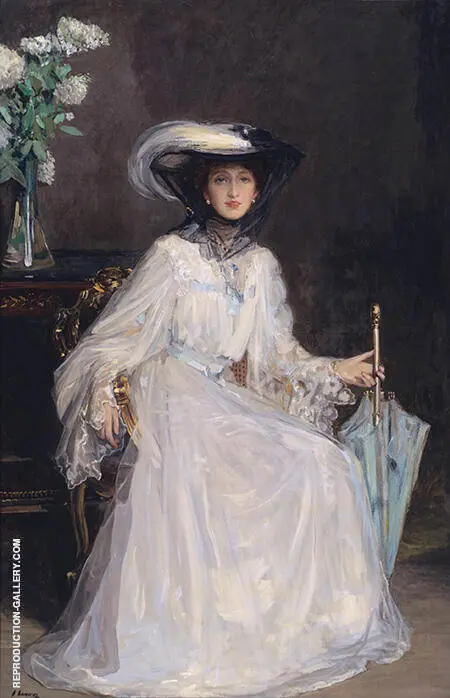Glasgow Boys Oil Painting Reproductions
Find Glasgow Boys Oil Painting Replicas by Glasgow Boys Artists
Glasgow Boys: Scottish Art
Glasgow Boys was a group of artists working in Glasgow, Scotland. These Scottish artists came together in the 1870s and were active during the late 1890s and early 1900s. Their work continued into the early 1910s, only disrupted by the outbreak of World War I in 1914. These artists embraced change, created stunning masterpiece paintings, and became icons of Scottish art in the process.
But who were the Glasgow Boys? This brief introduction explores this art movement, its famous art, and celebrated Scottish art.
What was the Glasgow Boys’ painting style?
The international Art Nouveau movement deeply inspired the Glasgow Boys. Popular between 1890 and 1910, these artists rejected formal academic art. Instead, they focused on the natural world to give their oil paintings a sense of dynamism and movement. There were several sub-groups linked with the Glasgow Boys. Some artists in the movement were known simply as The Four. Other groups included the broader Glasgow School and the Glasgow Girls. As the name suggests, this latter group consisted of famous women artists.
The Glasgow Boys' paintings reflect the continental developments in Impressionist paintings and the Post-Impressionist art movement. Like avant-garde French artists at the time, the Glasgow Boys focused on rural scenes and everyday life in Scotland. Their colorful paintings depict the countryside around Glasgow. Contemporary trends towards Realism and Naturalism also influenced their oil-on-canvas paintings.
How did the Glasgow Boys form?
Glasgow experienced a massive economic boom during the late 19th century. The city’s merchants drove this wealth by investing in Classical art and architecture. These Classic and Neoclassical paintings frequently focus on mythological and historical topics. While the Glasgow School eschewed Classicism and Neoclassical styles, the city’s pre-existing focus on the arts did help pave the way for the Glasgow Boys to unite. They met while studying at the Glasgow School of Art during the 1800s. They shared a dislike of traditional academic painting in the city. In contrast, the Glasgow Boys employed a looser style of brushwork, fusing multiple influences. These influences included the Arts and Crafts Movement, a British movement influenced by Romantic art, medieval paintings, folk art, and “Japonisme.” The Japonisme style was intensely popular in France and gradually spread to the rest of Europe. It demonstrates the massive influence of Japanese art and culture at the time. The Celtic Revival and famous Impressionist paintings also inspired the Glasgow artists.
Who were the Glasgow Boys?
The Four were the most renowned members of the Glasgow Boys and the Glasgow School. These four include Margaret MacDonald Mackintosh, the famous female artist, and her sister, Frances MacDonald Mackintosh. Charles Rennie Mackintosh, Margaret’s husband, and Herbert MacNair completed the group.
As well as the “Four,” there were three distinct waves of Glasgow Boys:
● The first wave included artists such as William York Macgregor and James Paterson. They often met at Macgregor’s studio in the city. Paterson’s Moniaive, currently held by the Hunterian Art Gallery at the University of Glasgow, exhibits strong influences from the Realist style of Dutch landscape painting.
● The second wave of Glasgow Boys consisted of George Henry, James Guthrie, Thomas Millie Dow, and Joseph Crawhall. James Whitelaw Hamilton, E. A. Hornel, and E. A. Walton were also involved. To Pastures New and A Hind’s Daughter by James Guthrie exemplify this second wave’s calm, rural focus.
● Reflecting the increasing renown of the Glasgow School of Art, the third wave of artists was the largest. This third wave included David Gauld, William Kennedy, John Lavery, Arthur Melville, and James Nairn (to name just a few). Paintings such as "Gold Links at North Berwick" and "The Croquet Party" by John Lavery demonstrate how Glasgow artists were moving away from strictly rural subjects.
Why was the Glasgow School called the Spook School?
The Spook School, Spooky School, and Ghoul School were all alternative names for the Glasgow School of Art. These labels mocked Glasgow artists for their distorted and elongated human forms. While this started as a derisive epithet, Glasgow artists quickly adopted the term. In addition to trends in French and Japanese art, the Glasgow Boys also particularly respected James Abbott McNeill Whistler and his Tonalist paintings. Linking all these artists is their passion for creating art that depicts reality. Consequently, artists in the movement often painted en plein air, a French term meaning "outside," allowing the Glasgow Artists to get as close to nature as possible, painting real places and people.
Their quick and spontaneous painting style was novel for the period, leading to the Glasgow artists’ reputation for innovation. Their Impressionist painting techniques, often dealing with the fleeting effects of weather and light, also created a sense of intense movement. Combined with a richly textural approach, it made the Glasgow Boys’ art stand out.
Who were the Glasgow Girls?
In addition to the Glasgow Boys, many female artists and designers worked in the city during this period. Indeed, women artists flourished during the Scottish Enlightenment era. Art Historians often credit these developments to Fra Newbery, the influential head of the Glasgow School of Art. He created an accepting and open environment, allowing women to succeed as artists and teachers.
The Glasgow Society of Lady Artists, founded in 1882, also provided a space for female painters to meet and exhibit their work. The women’s suffrage cause also brought female artists together during this period. Some of the “Glasgow Girls” included Frances and Margaret MacDonald Mackintosh, also members of “The Four,” Annie French, and Helen Paxton Brown. Norah Neilsen Gray, Ann Macbeth, and Jessie M. King also played a part.
Scottish Wall Art: Reproduction Oil Paintings for Sale
If you love the colorful wall art of the Glasgow Boys, explore our extensive collection of fine art reproductions. Our famous oil painting reproductions represent some of the finest Scottish artists.
Choose your favorite replica art from 30,000+ famous paintings.
Please visit our HELP CENTER and FAQ for more information.
Cannot Find What You Are Looking For?
Reproduction Gallery Information
Customer Service
(Send Us A Message)
Tel: (302) 513 3464


































